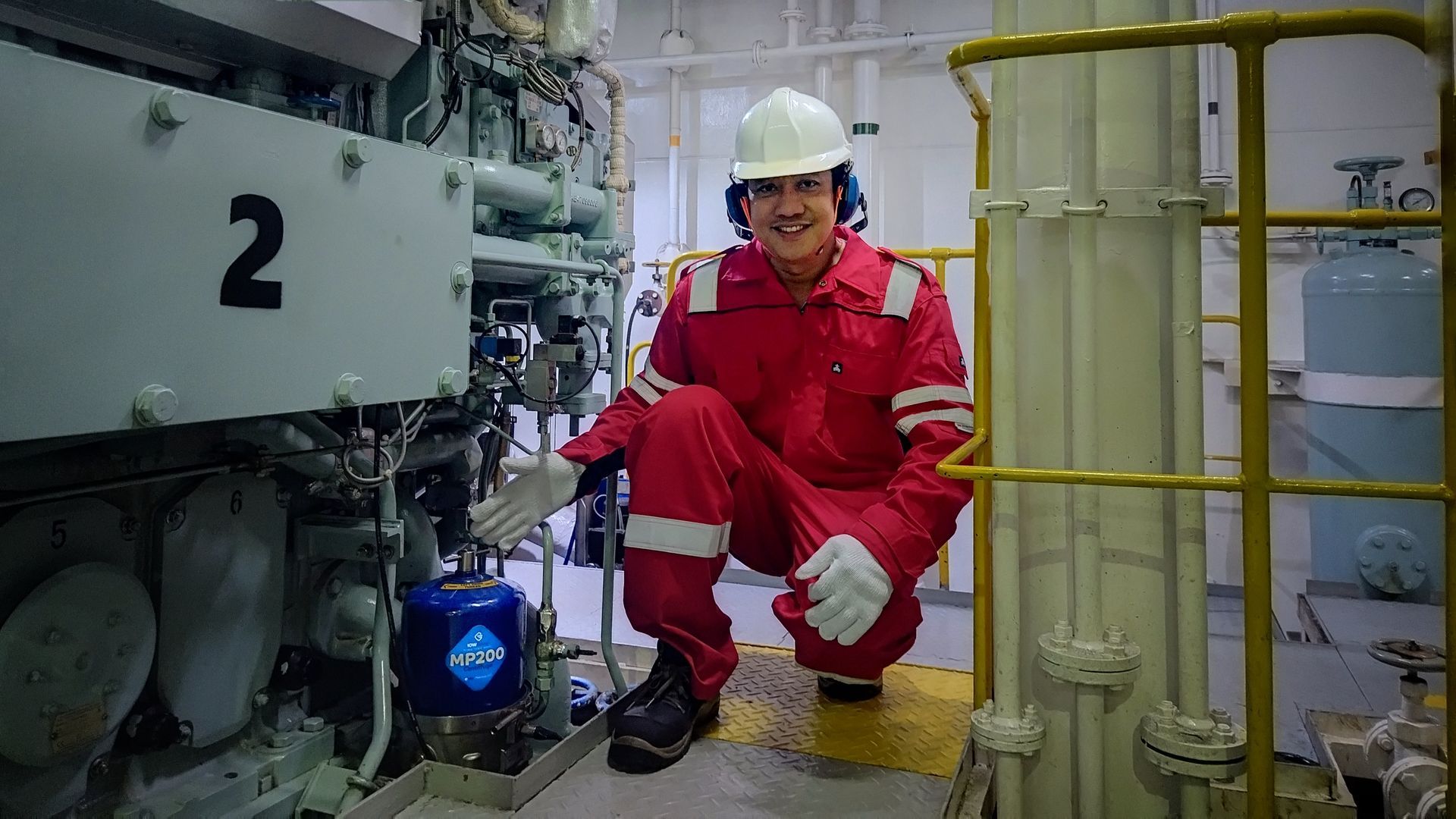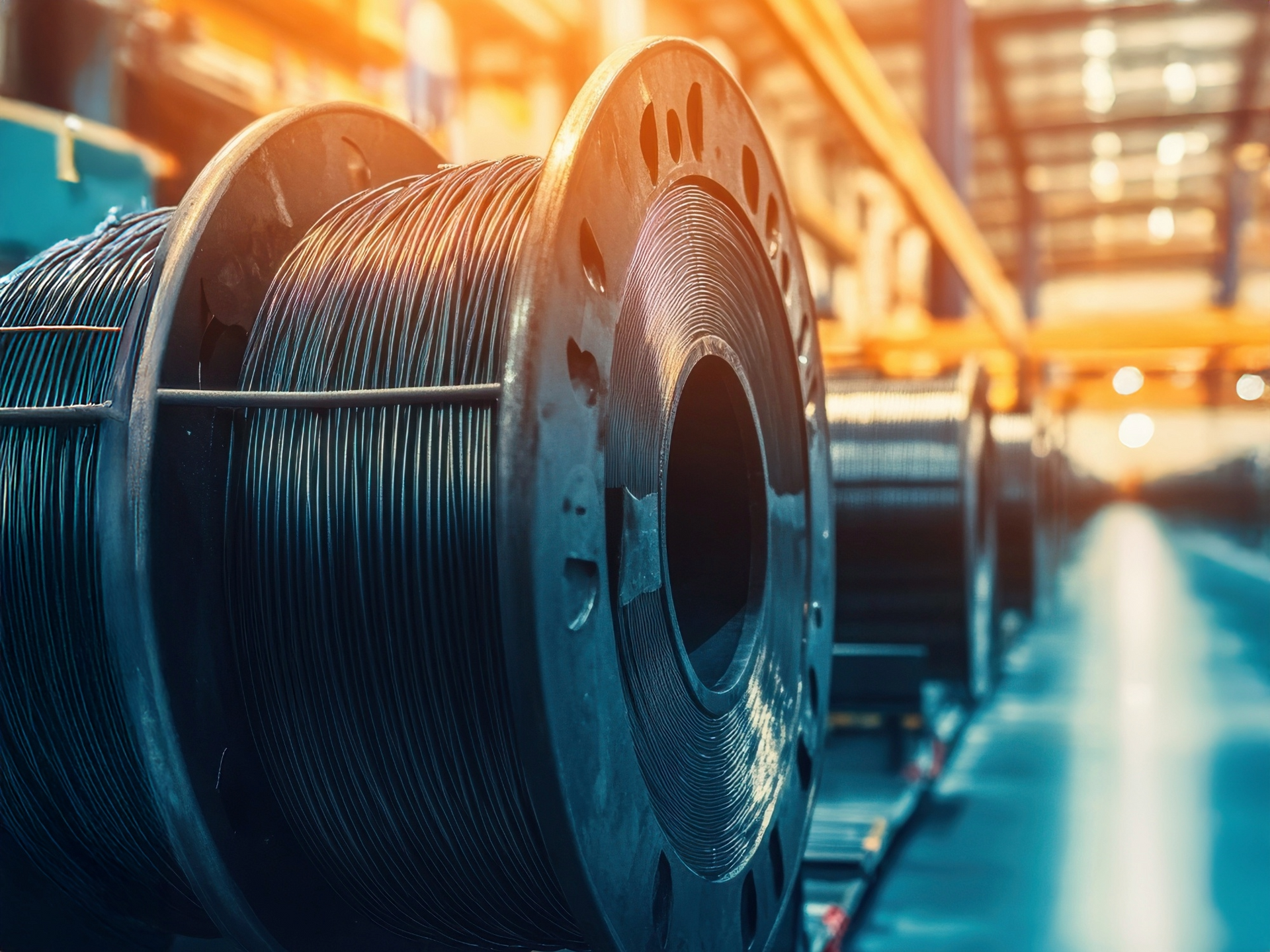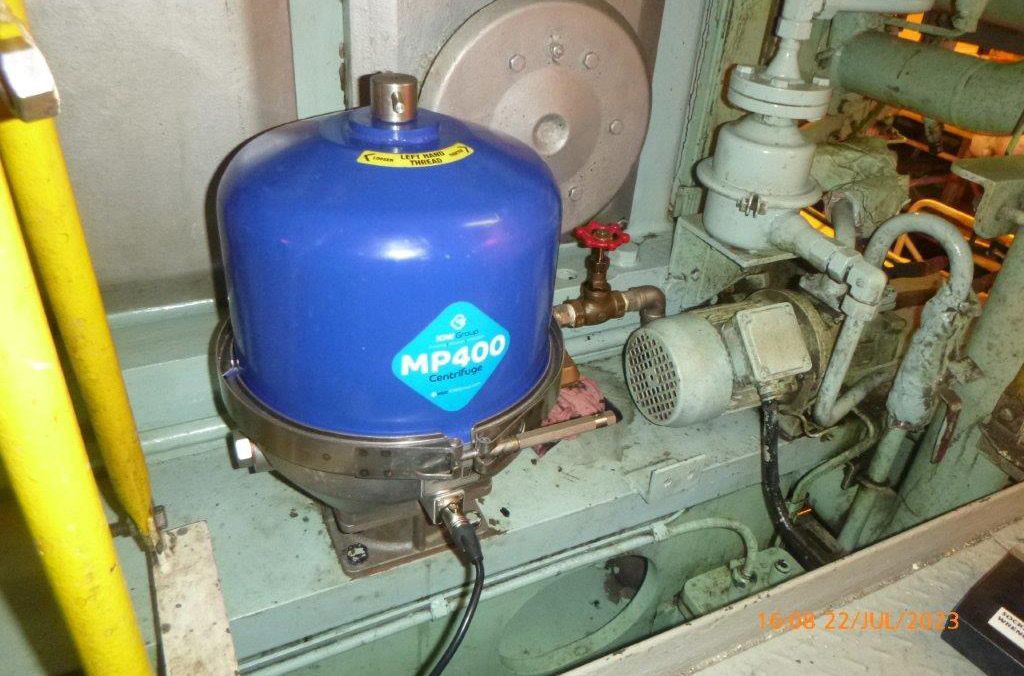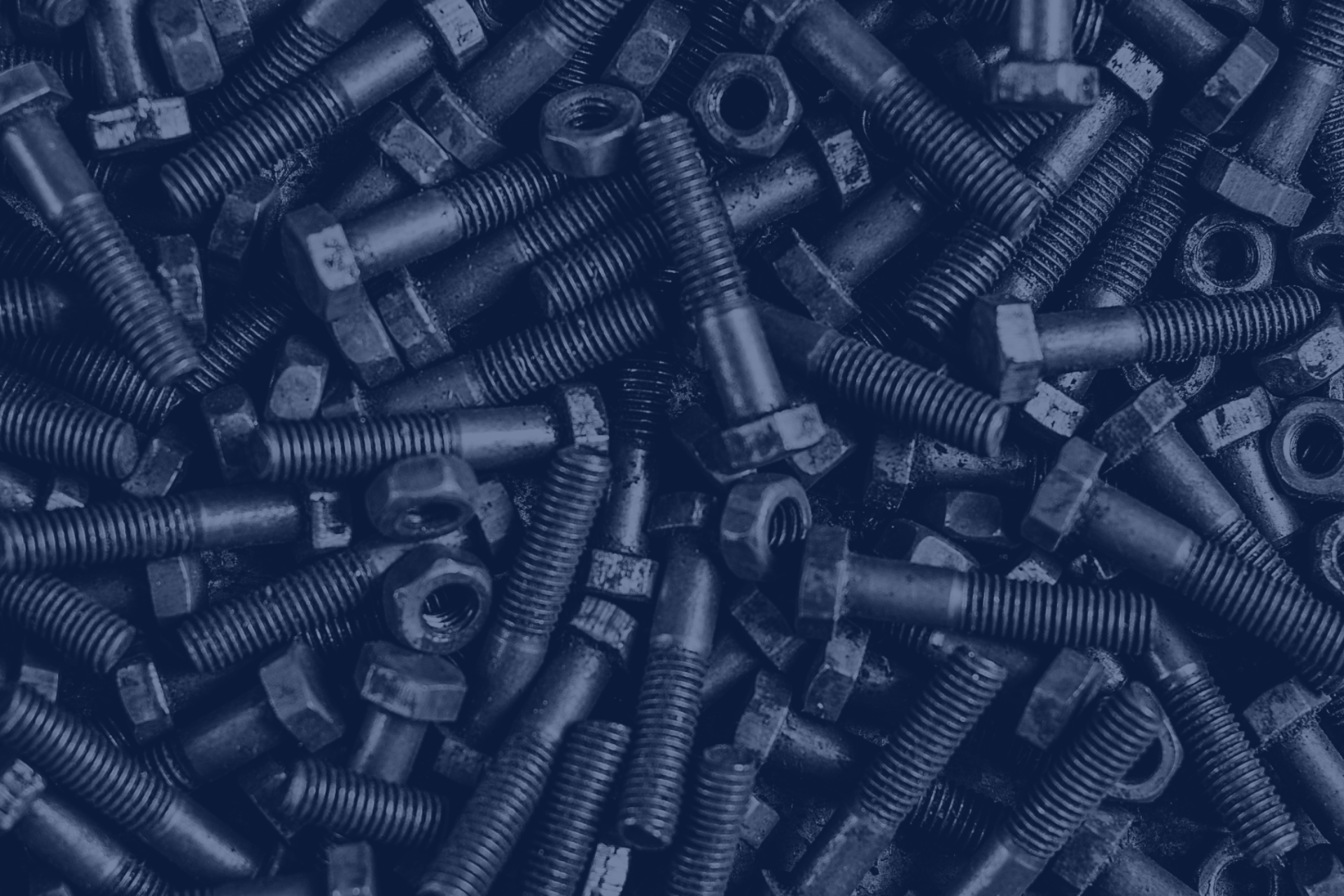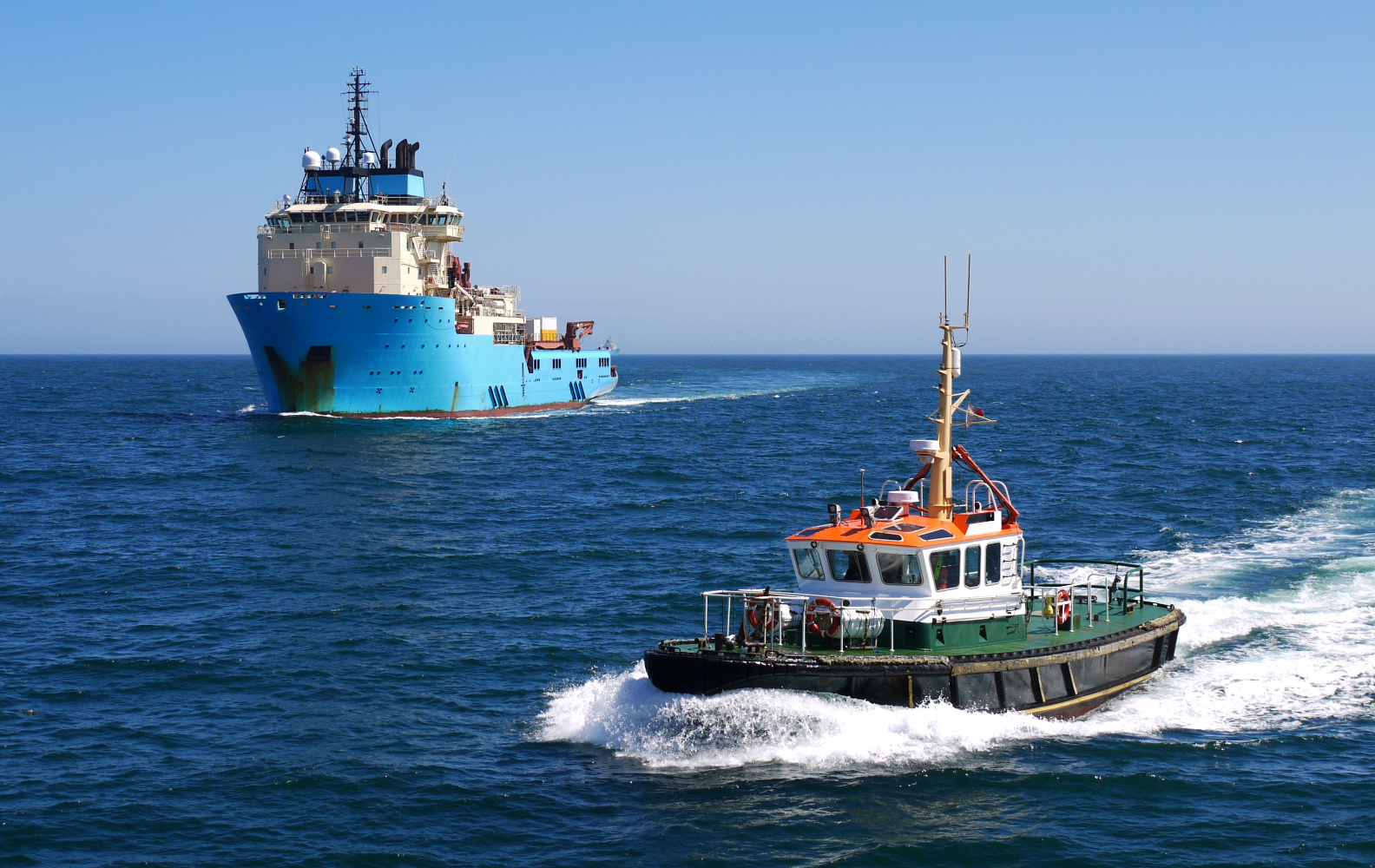Centrifugal oil separation is a process used to separate solids from a liquid, typically in applications like oil refining and wastewater treatment. It relies on the principles of centrifugal force, density differences, and the behavior of particles in a rotating system.
If you've just invested in a centrifugal oil separator or are thinking about boosting your engine’s performance with one, you might be wondering how it all works. That’s what we’re here to explain today!
IOW Group are global leaders in centrifugal oil filtration and separation technology, featuring the eQlyps, our all-in-one filtration system. Combining a Q series backflushing filter, backflush pump, MP centrifuge, and state-of-the-art remote monitoring technology, it’s the ultimate oil cleaning solution for engines of all kinds.
In the guide below, we'll explore what centrifugal force is, how centrifugal oil separators make use of it, and what factors play a role in making these systems perform their best.
What is centrifugal force?
To understand how centrifugal oil separators work, you first need to understand how centrifugal force works.
Centrifugal force is a pseudo-force that appears to push objects away from the center of rotation. It’s called a “pseudo-force” because it's not a real force in the fundamental sense, like gravity or electromagnetic forces. Instead, it's a perceived force that appears to act on an object moving in a circular path. It arises due to inertia, causing objects to move in a curved path when they are subjected to circular motion. There’s no actual force pushing outward; it's the object's own inertia that makes it want to continue moving in a straight line, which gives the impression of an outward force.
Take this example: a car going around a curve. As the car turns, you might feel pushed outward against the car door. This sensation is due to the car's inertia trying to keep it moving in a straight line, while the car itself is curving.
How do centrifugal oil separators use centrifugal force?
Centrifugal oil separators are named as such because they depend on centrifugal force to work. Here’s a brief overview of the process:
- Contaminated fluid (often a mixture of oil and other particles or impurities) is introduced into a spinning centrifuge bowl through an inlet pipe or port.
- As the mixture rotates at high speeds, the centrifugal force causes the heavier components (water and solids) to be pushed outward, forming a dense layer along the vessel's walls. This is known as the "sediment" or "cake."
- At the same time, the lighter oil is forced towards the center of rotation, forming a separate layer known as the "overflow" or "effluent."
- The clean oil, which is now largely free of contaminants, is expelled from the bowl to be reused. All the contaminants and impurities are collected within the outer edge of the bowl and are removed during a service.
The effectiveness of centrifugal oil separation is dependent on rotation speed and other operational parameters. Higher speeds generally result in better separation.
How does the design of a centrifugal oil separator affect its efficiency?
The design of a centrifugal oil separator is crucial in determining its separation efficiency. A well-designed separator can effectively remove all impurities from a liquid, while a poorly designed one may not perform as efficiently. Here are some key design factors that affect separation efficiency:
- Centrifuge size and speed: The size and rotational speed of the centrifuge are critical factors. A larger centrifuge with a higher rotational speed can generate greater centrifugal forces, which enhances separation efficiency. However, there's a trade-off because larger centrifuges are more expensive and consume more energy.
- Inlet and outlet design: Proper inlet design allows for uniform distribution of the mixture, preventing the formation of eddies or uneven flow that can reduce separation efficiency. Poorly designed discharge mechanisms, meanwhile, can lead to re-entrainment of oil in the separated mixture, reducing overall efficiency.
- Bowl design: The design of the centrifuge bowl determines the path that the mixture takes as it is subjected to centrifugal forces. A well-designed bowl should encourage the separation of oil and other components effectively.
- Residence time: The time that the mixture spends inside the centrifuge, also known as residence time, can impact separation efficiency. Longer residence times allow for more complete separation, but excessively long times may not be practical.
Next-level centrifugal oil separators from IOW Group
Centrifugal oil separators were first invented decades ago, and their design had remained largely unchanged since their introduction. When the engineers at IOW Group realized just how outdated they were, we set out on a five-year journey to completely revamp the traditional centrifuge design. We ended up creating a brand-new range of four centrifugal oil separators, all of which performed at a level unmatched by any other - and one that’s still unmatched to this day.
Available in four different sizes, our separators use centrifugal force 2,000 times stronger than gravity to effectively remove contaminants that can harm engines. They massively extend the lifespan of lubricating oil in both engines and gearboxes, saving you time and money on maintenance and reducing their environmental impact. Here’s what makes them stand head and shoulders above the rest:
- Our centrifuges are the only ones in their size category that utilize bowl discs, a feature usually reserved for larger units. This means they can remove significantly more small particles compared to other centrifuges in their league. We've also taken steps to improve the sealing between the dirty oil inlet and the cleaned oil outlet, resulting in minimal cross-contamination.
- Unlike any other products out there, MP centrifugal oil separators come with the option of CentriClean remote monitoring via
Separator Control Units (SCUs). These can notify you or your system when it's time for servicing or cleaning, saving on valuable manpower.
- We manufacture and assemble all of our centrifuges on the Isle of Wight, UK. Our state-of-the-art facility features a variety of dedicated quality control areas, where all of our products undergo thorough testing. This guarantees the highest standards of reliability and performance in every product we send out.
Whatever your industry, our oil separation technology has the potential to transform the performance of your engines, save you thousands in maintenance and operation costs, and help you play your part towards a greener future. Book a consultation online and get started today!
